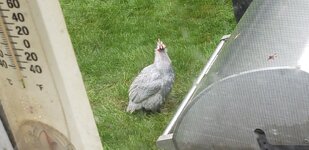jiggerjohn
Active member
- Joined
- Mar 23, 2010
- Messages
- 547
Hey Frank, That's a great idea for us to build separate sections of the mop jig to stimulate fish provoking ideas ! We're gonna be like two sections of the old donkey /two people costume -unfortunately with our combined efforts YOU will be the rear end !! Naw, I'll dig out some mop jigs to send ya, but only if you'll keep a couple for serious testing in your waters next Spring!
As to your simple but basic ,genius Spoonminnow design for tipping mops, I was first enthralled with it when reading an old copy of the out-of-date book(1960s?) "Bait Tail Fishing" where the author went thru elaborate description and fish pics of his similar (but stiff) eel like design for saltwater fishing ; the guy claimed nothing could beat his simple jig anywhere, and certainly displayed his evidence! When I first tried yours(similar design to the bait tail, tho yours is much softer and more actionized) in the salt for seatrout and bluefish, I went thru my whole supply in one session! Freshwater fish loved it,too, with your sparkley colors -still love that speckled emerald green color- and the wiggly, vibrating tail really compliments the mop underbelly with its subtle belly wagging. I guess the spoonie really looks like everything, tho resembles nothing real -its basic shape is just a proven winner ! I do believe the "Mop-Spooner" comes into motion so easily with a slow, twitchy rod retreive that its subtle vibations reach a long way out.
As to your simple but basic ,genius Spoonminnow design for tipping mops, I was first enthralled with it when reading an old copy of the out-of-date book(1960s?) "Bait Tail Fishing" where the author went thru elaborate description and fish pics of his similar (but stiff) eel like design for saltwater fishing ; the guy claimed nothing could beat his simple jig anywhere, and certainly displayed his evidence! When I first tried yours(similar design to the bait tail, tho yours is much softer and more actionized) in the salt for seatrout and bluefish, I went thru my whole supply in one session! Freshwater fish loved it,too, with your sparkley colors -still love that speckled emerald green color- and the wiggly, vibrating tail really compliments the mop underbelly with its subtle belly wagging. I guess the spoonie really looks like everything, tho resembles nothing real -its basic shape is just a proven winner ! I do believe the "Mop-Spooner" comes into motion so easily with a slow, twitchy rod retreive that its subtle vibations reach a long way out.



